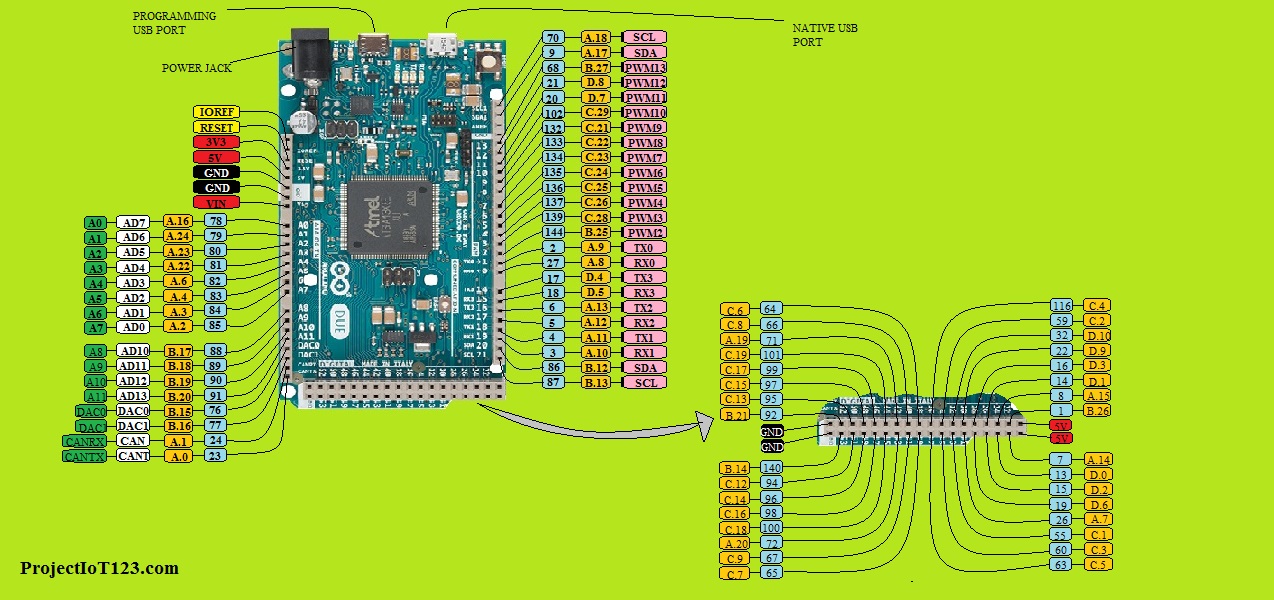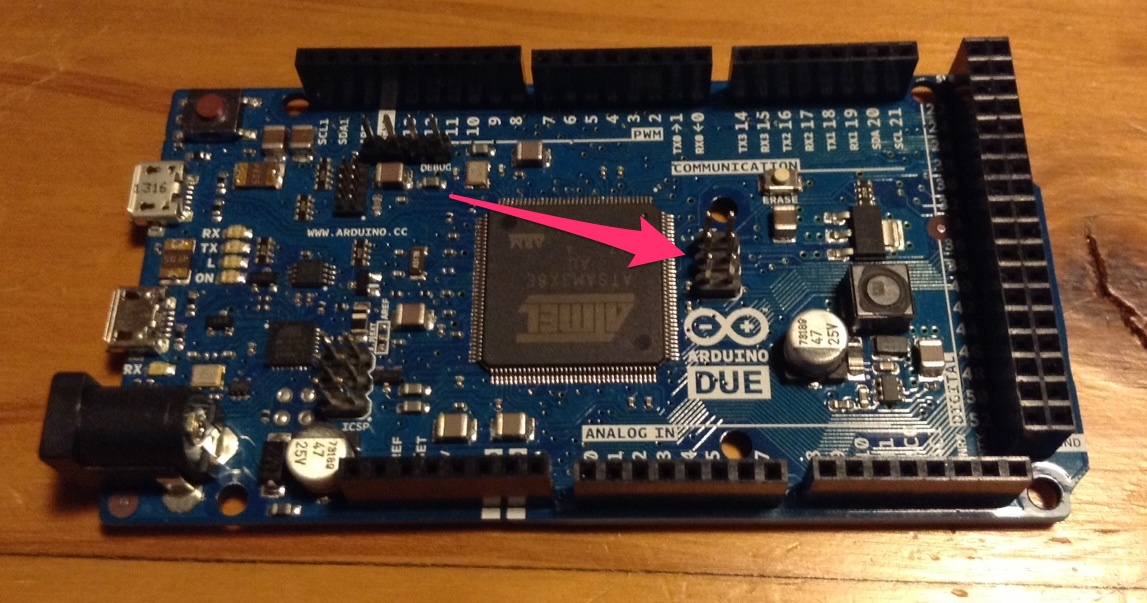

- #ARDUINO DUE SERIAL#
- #ARDUINO DUE 32 BIT#
- #ARDUINO DUE SOFTWARE#
A 32-bit core, that allows operations on 4 bytes wide data within a single CPU clock.The Due has a 32-bit ARM core that can outperform typical 8-bit microcontroller boards.

An unconnected pin, reserved for future use. This enables shield compatibility with a 3.3V board like the Due and AVR-based boards which operate at 5V.
The IOREF pin which allows an attached shield with the proper configuration to adapt to the voltage provided by the board. TWI: SDA and SCL pins that are near to the AREF pin. The Due is compatible with all Arduino shields that work at 3.3V and are compliant with the 1.0 Arduino pinout. It is the first Arduino board based on a 32-bit ARM core. The board contains everything needed to support the microcontroller simply connect it to a computer with a micro-USB cable or power it with a AC-to-DC adapter or battery to get started. Overview The Arduino Due is a microcontroller board based on the Atmel SAM3X8E ARM Cortex-M3 CPU. Providing higher voltages, like 5V to an I/O pin could damage the board. The maximum voltage that the I/O pins can tolerate is 3.3V. Warning: Unlike other Arduino boards, the Arduino Due board runs at 3.3V. 
#ARDUINO DUE SERIAL#
It has 54 digital input/output pins (of which 12 can be used as PWM outputs), 12 analog inputs, 4 UARTs (hardware serial ports), a 84 MHz clock, an USB OTG capable connection, 2 DAC (digital to analog), 2 TWI, a power jack, an SPI header, a JTAG header, a reset button and an erase button. It is the first Arduino board based on a. It is the first Arduino board based on a 32-bit ARM core microcontroller. The Arduino Due is a microcontroller board used in robotics based on the Atmel SAM3X8E ARM Cortex-M3 CPU (datasheet).
An unconnected pin, reserved for future use.The Arduino Due is a microcontroller board based on the Atmel SAM3X8E ARM Cortex-M3 CPU ( datasheet). Arduino Due is ideal for those who want to build projects that require high computing power such as the remotely-controlled drones that, in order to fly, need to process a lot of sensor data per. We can program the Arduino Due using the Arduino IDE. The Arduino Due is currently in developer trials and is due out later this year. This product could leverage off the already available LabVIEW Embedded for ARM and the LabVIEW Microcontroller SDK. #ARDUINO DUE SOFTWARE#
This can be done by pressing the erase button on the Due, or via software (described later). The SAM3X8E comes with a factory-programmed ROM containing a bootloader called SAM-BA which is run when the ERASE pin is asserted during a reset. It would be great if we could programme it in LabVIEW. The Arduino Due actually has two methods for programming the chip.
#ARDUINO DUE 32 BIT#
The SRAM consists of two banks of memory, which are 32KB and 64KB. The Arduino Due is a 32 bit ARM based microcontroller board that is destined to be very popular. It consists of the 512KB Flash Memory and 96KB SRAM.
IOREF: allows an attached shield with the proper configuration to adapt to the voltage provided by the board. The input voltage of Arduino Due varies from 7V to 12V. The board contains everything needed to support the microcontroller simply connect it to a computer with a micro-USB cable or power it with a AC-to-DC adapter or battery to get started. Applying voltages higher than 3.3V to any I/O pin could damage the board. While the UNO and Nano operate at 5V, the Due operates at 3. Warning: Unlike most Arduino boards, the Arduino Due board runs at 3.3V. The Arduino Due is one of the larger boards and is also the first Arduino board to be powered by an ARM processor. 
It is the first Arduino board based on a 32-bit ARM core microcontroller. The Arduino Due is a microcontroller board based on the Atmel SAM3X8E ARM Cortex-M3 CPU.








 0 kommentar(er)
0 kommentar(er)
